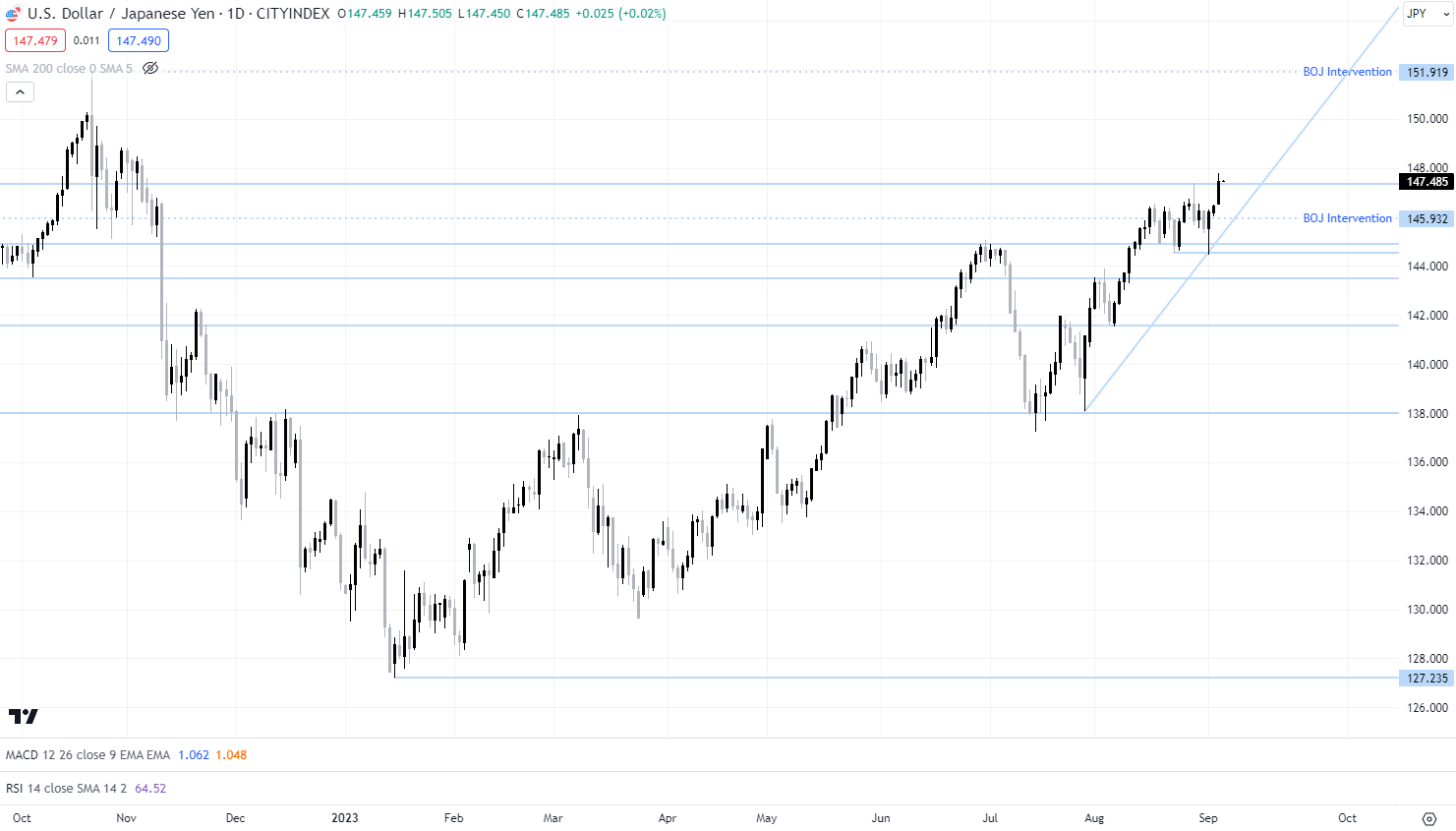
Japanese officials are threatening to intervene in FX markets again, prompted by the USD/JPY surging over 2% since the start of September, leaving it at the highest level since November 2022. But with the yield premium the United States enjoys over Japan for benchmark government bonds expanding yet again, whether any form of intervention will work beyond the short-term – be it verbal or physical – is highly debatable.
Speaking earlier today, Japan's top currency diplomat Masato Kanda said authorities won't rule out any options on currencies if speculative moves persist, suggesting it is desirable for FX moves to be stable and reflect fundamentals.
The comments are the first we’ve seen from any Japanese official during this latest episode of yen strength, reinforcing yet again that it’s the speed, not the level of the yen, that gets policymakers feeling a little hot under the collar.
The USD is strong rather than JPY weak
But Kanda’s suggestion the latest move is driven by something other than fundamentals doesn’t stack up. Just look around the FX universe to see this is a strong US dollar story, rather than a weak Japanese yen one. Just look at the Chinese yuan, the Australian dollar, the euro and UK pound – they’re all getting hammered by various degrees, and for good reason. Softer economic data is fueling the view that rate hikes are over in those jurisdictions. At the same time, the US economy looks to be holding up far better, keeping the prospect for further interest rate increases in play. That, along with a strong US corporate debt issuance pipeline, is driving US yields higher, enhancing the USD’s appeal over other currencies.
Less BOJ intervention needed, not more
For a country such as Japan, whose household sector is looking extremely weak relative compared to the United States based on economic data, it’s no surprise global capital is flocking to the USD. Unless the Bank of Japan (BOJ) decides to loosen its grip on yield curve control – allowing Japanese government bond yields to move higher and narrow the yield gap to the US – any attempt to bolster the yen by intervening in markets will be near-useless beyond the near-term. Put bluntly, if Japan’s Ministry of Finance desires a stronger Japanese yen, it should be encouraging the BOJ to stop intervening as aggressively in the bond market, rather that intervening more in FX.
Prior intervention playbook
Kanda’s verbal warning is only a preliminary step before actual intervention occurs, unless the playbook has changed. Usually, markets will get further verbal warnings, often with more urgent language. Then comes spot checks by the BOJ on USD/JPY levels at Japanese banks before it will eventually pull the trigger. We're not at that point yet. And if the BOJ does intervene while yield spreads with the United States remain elevated, it will merely provide an opportunity for traders to reset fresh USD/JPY longs.
Key risk event looms for USD/JPY
If we are talking fundamentals, the next key event for markets to watch is Wednesday’s US ISM non-manufacturing PMI survey. If it continues to display the resilience of the US economy, especially if accompanied by stronger readings on employment and building inflationary pressures, it’s hard to see anything other than continued US dollar strength given how weak other services PMI readings have been around the world.
USD/JPY retreats for now
On the charts, Kanda’s threat has seen USD/JPY pullback towards previous resistance located at the August high around 147.30. For those looking to initiate longs, a stop below here will provide protection against an unlikely near-term BOJ intervention or a deterioration in the US ISM survey. On the upside, there’s not a lot of major levels to focus on until we get to the where the BOJ last intervened just below 152.00. USD/JPY did some work around 148.80 in the past, so that may be the first level to watch.

Source: Trading View
-- Written by David Scutt
Follow David on Twitter @scutty
How to trade with City Index
You can trade with City Index by following these four easy steps:
-
Open an account, or log in if you’re already a customer
• Open an account in the UK
• Open an account in Australia
• Open an account in Singapore
- Search for the market you want to trade in our award-winning platform
- Choose your position and size, and your stop and limit levels
- Place the trade





